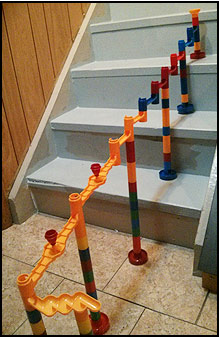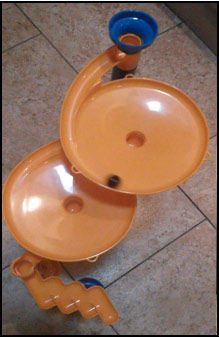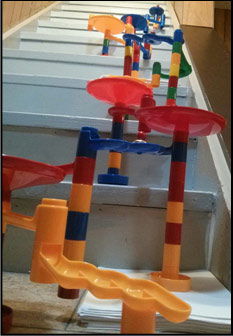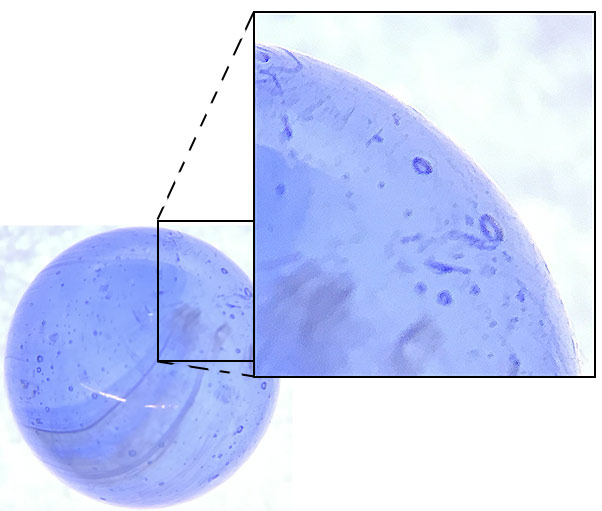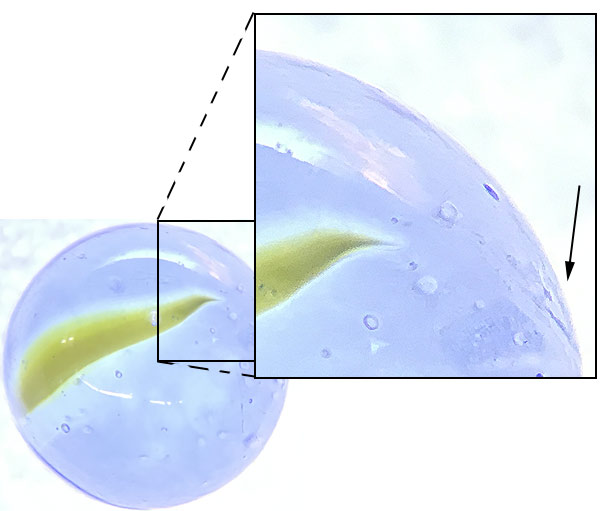
The sport known as marble racing is poised for a breakout. With videos featuring marbles racing their hearts out often netting millions of views on YouTube™ - including this classic race with 10 million views. Despite our guess and hope for which of the speedsters will fight their way down the track, there is little information to understand why it is certain marbles become champions. Here we peer into the souls of the marbles themselves, parsing out their shape, weight, roll and more in an effort to sort out the best... from... the rest.
On a microscopic scale all marbles are a little bit different. The hypothesis of this experiment is that specific factors will play a role in deciding which marble wins the competition. Specifically, given that marbles bash each other around a bit on their race to the bottom it is expected that heavier marbles will be the winners.
The experiment was conducted in three stages - the first was to identify the fastest marble on a straight track (left), then the fastest on a spiral track (middle), and then a final tournament on an extended mixed track (right). Next, marbles were weighed on an analytical balance and then photographed under a microscope and the diameter of each marble was measured using Adobe Photoshop.
Pictures of individual marbles:
1 | 2 | 3 | 4 | 5 | 6 | 7 | 8 | 9 | 10 | 11 | 12 | 13 | 14
15 | 16 | 17 | 18 | 19 | 20 | 21 | 22 | 23 | 24 | 25
26 | 27 | 28 | 29 | 30 | 31 | 32 | SR | SBFinally, the thirty two marbles competed in the tournament. To start marbles were randomly assorted into groups of four - the two top would move to the winners bracket and the bottom to the losers bracket. All winners, or losers respectively, would then be regrouped and compete and this process would countinue until a final stage that then determines the ranking of the marbles.
Following measurement of weight, diameter, area, and circularity the marbles were checked for maximal speed (video below). However, analysis of the 12 fastest versus the 12 slowest marbles did not reveal differences in any of these descriptive measures.
Next, the marbles were tested for the speed to complete two spiral segments (video below). However, as with the speed test, the fastest spiral marbles also did not differ in any of the measurements, nor had any relationship with the fastest speed marbles.
After the circularity test the marbles competed in the tourney (video below).
Although none of the basic parameters could distinguish between the 12 best and 12 worst marbles - performance on the speed and spiral tests was predictive of the best marbles (Table below).
Marbles 12-Fastest 12-Slowest P-Value
Please click here to view all the individual marble data. Next, we took the best two marbles from this competition and had them battle head to head with two small marbles (video below). Our experiment found that one of the small marbles won the competition while the other lost.Finally, to further examine the possibilty that the smoothness of the surface of the marble may have been a factor - we took microscope images of the slowest (left) and the fastest marble (right) - the arrow indicates potential scratch on the surface of the fastest marble
To our surprise not a single descriptive factor was able to discern the best from the rest of the marbles. Although this may be due to the rough and tumble nature of a marble race that adds significant variability and enjoyment to the race. However, this explanation is not supported by the finding that the speed test and the spiral test were able to identify successful marbles in the larger race. A couple of later test probably require more data to support the findings - in particular the performance of the small marbles versus the regular sized marbles left questions as to whether large differences in size matter. And further - the zoom in on the surface of the marbles may provide the key to success - particularly as the possibilty exists that marbles with a rough surface move quicker through the spirals and thus onward to victory. If this is true, then the world may be viewing marble races all wrong as the more perfect marbles are actually the last ones to finish! In any case, this experiment increases awareness for marble racers who should be on the look out for nail files!
Special thanks to Brandon Seldeen for experimental assistance and use of the marbles.
Questions or comments? Visit ScienceChatForum.com to continue the discussion!

